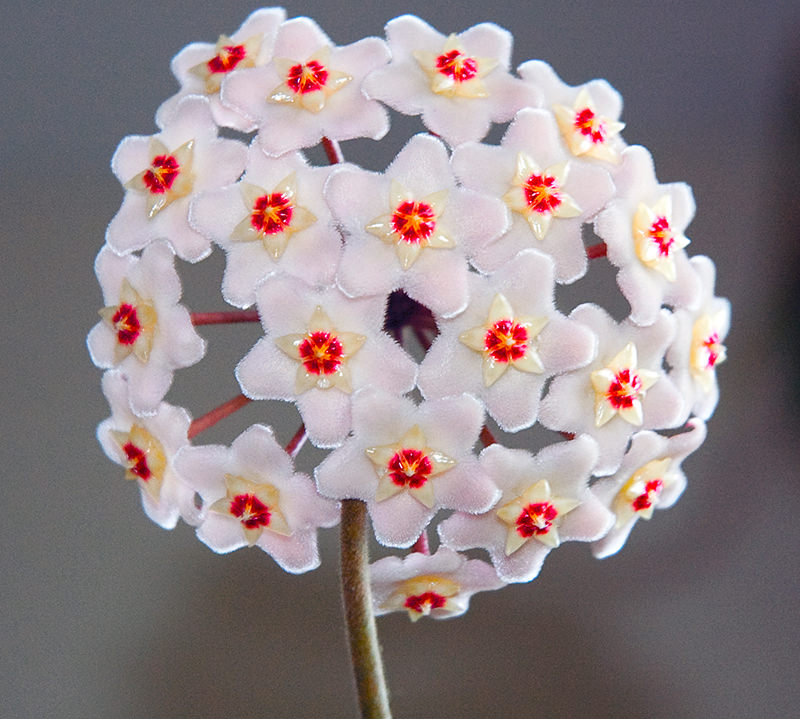
Houseplants green our homes, filter toxins from the air and brighten even the dreariest of winter days. While ferns, pothos and philodendrons are wonderful, easy-to-care-for houseplants, it’s the flowering houseplants that really win me over. If a flowering houseplant happens to be fragrant, too? Well, then there’s no doubt it’s worth going gaga over. Here are three of my favorite fragrance-filled houseplants and how to care for them.
1. Winter Jasmine (Jasminum polyanthum)
The pale pink-and-white, trumpet-shaped flowers of this vine have an incredibly sweet fragrance. Winter jasmine (pictured above) is a native of Asia and looks beautiful growing up a topiary ring or frame. In USDA zones 8 to 11, winter jasmine is an outdoor climbing evergreen vine, but where winter temperatures dip below freezing, the plant is primarily grown as a houseplant.
Flowers are borne in clusters in the late winter. Winter jasmine prefers a cool room with bright light but no direct sun. Keep this beauty away from forced air heating ducts and drafts. Because it loves high humidity, set the pot on top of some rocks spread in a tray of water during the winter months—as the water evaporates out of the tray, it will raise the humidity around the plant—but make sure the bottom of the pot does not come in contact with the water in the tray or it could lead to root rot.
Jasmine plants should be moved outdoors in the spring when the weather warms, but be sure to move it back inside before frost threatens. To produce flower buds for the following winter, jasmine plants must be subjected to five weeks of night temperatures between 40 and 50 degrees F during the early autumn.
2. Gardenia (Gardenia jasminoides)

Gardenias are incredibly beautiful and fragrant, but admittedly, they’re notoriously fussy plants. This tropical evergreen shrub bears pure-white blooms and has dark, glossy leaves. In the southern U.S., gardenias are fully winter hardy and can grow into large shrubs, but where winter temperatures grow cold, gardenias are best grown as a houseplant during the winter months.
Select an indoor location with plenty of bright light, moderate humidity, and temperatures between 55 and 65 degrees F during the daytime. If you don’t have a humid, cool room in the house, you can mist your gardenia with de-chlorinated water a few times per week. Water your gardenia regularly; do not allow the plant to completely dry out or all of the flower buds will drop off, and do not over-fertilize. In the summer, gardenia plants should be moved to a shady site outdoors.
3. Fragrant Wax Or Rope Plant (Hoya spp.)

Many species of hoya have fragrant flowers. The fragrance is sweet and the flower clusters are smooth and glossy. They’re so perfect, they almost look fake. A native of India, hoya plants have thick, waxy leaves that are sometimes curled and sometimes flat, and they can be many different shapes and sizes, depending on the species.
Typically a vining plant, hoya look great growing up a topiary form or cascading over the edge of a pot. Pick a site that gets lots of sun, but is protected from cold winter drafts. Hoya will survive with minimal light, but the more light the plant receives, the more blooms it will produce. Hoya are tough plants and don’t require much coddling. They’re easy to start from cuttings and require nothing more than regular irrigation. Heck, hoya even love to be pot-bound, meaning they seldom require transplanting.




